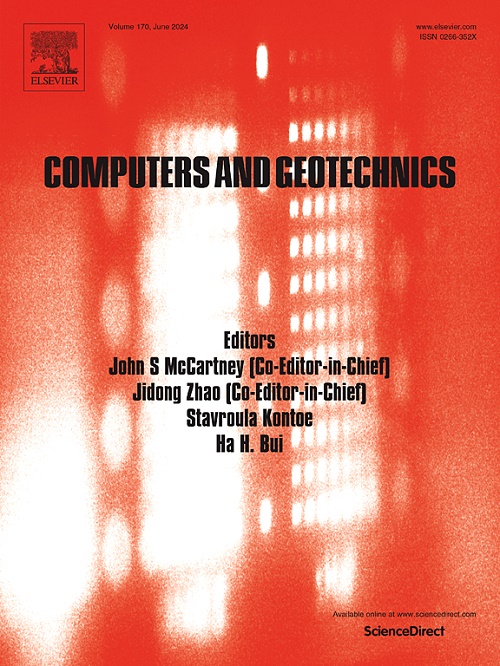软弱岩层中隧道-轨道综合系统的粘弹塑性模型
IF 6.2
1区 工程技术
Q1 COMPUTER SCIENCE, INTERDISCIPLINARY APPLICATIONS
引用次数: 0
摘要
地下铁路运输系统为空间限制提供了一种可持续的解决方案,特别是在城市地区,然而,在软弱岩石中建造这种系统提出了重大挑战。本文提出了一种新的计算方法来评估隧道-轨道综合系统在考虑列车运行影响下的动力响应。分析了列车移动荷载对隧道嵌体和隧道周围软弱围岩的影响。引入粘弹塑性模型,结合Hooke、Newton和St. Venant元素,模拟综合隧道-轨道系统内部复杂的相互作用。该模型对隧道周围的岩体采用Hoek-Brown准则。首先评估列车运行荷载对轨道和隧道嵌体的动力效应,然后将其产生的应力作为隧道嵌体的内部支撑压力来评估周围围岩的响应。根据现有的实验和数值研究验证了该模型。本研究为实践工程师提供了一个有价值的计算工具,以评估在具有挑战性的弱岩层中建造的综合隧道-轨道系统的长期结构响应。本文章由计算机程序翻译,如有差异,请以英文原文为准。
Viscoelastoplastic model for an integrated tunnel-track system in weak rock formations
Underground railway transportation systems offer a sustainable solution for space constraints, especially in urban areas, however, the construction of such systems embedded in weak rock presents significant challenges. This study introduces a novel computational approach to evaluate the dynamic response of integrated tunnel-track systems while considering the effect of moving trains. The effect of a moving train load is assessed for the tunnel inlay and the weak rock surrounding the tunnel. A viscoelastoplastic model, incorporating Hooke’s, Newton’s and St. Venant’s elements, is introduced to simulate complex interaction within the integrated tunnel-track system. The model utilises Hoek-Brown criteria for the rock mass surrounding the tunnel. Firstly, the dynamic effects of the moving train loads are assessed for the track and the tunnel inlay, and then the resulting stresses on the tunnel inlay are treated as internal support pressure to evaluate the response of the surrounding karstic rock. The model is validated against existing experimental and numerical investigations. This study provides a valuable computational tool for practising engineers to assess the long-term structural response of integrated tunnel-track systems constructed in challenging weak rock formations.
求助全文
通过发布文献求助,成功后即可免费获取论文全文。
去求助
来源期刊

Computers and Geotechnics
地学-地球科学综合
CiteScore
9.10
自引率
15.10%
发文量
438
审稿时长
45 days
期刊介绍:
The use of computers is firmly established in geotechnical engineering and continues to grow rapidly in both engineering practice and academe. The development of advanced numerical techniques and constitutive modeling, in conjunction with rapid developments in computer hardware, enables problems to be tackled that were unthinkable even a few years ago. Computers and Geotechnics provides an up-to-date reference for engineers and researchers engaged in computer aided analysis and research in geotechnical engineering. The journal is intended for an expeditious dissemination of advanced computer applications across a broad range of geotechnical topics. Contributions on advances in numerical algorithms, computer implementation of new constitutive models and probabilistic methods are especially encouraged.
 求助内容:
求助内容: 应助结果提醒方式:
应助结果提醒方式:


